 EN
EN
 PT
PT
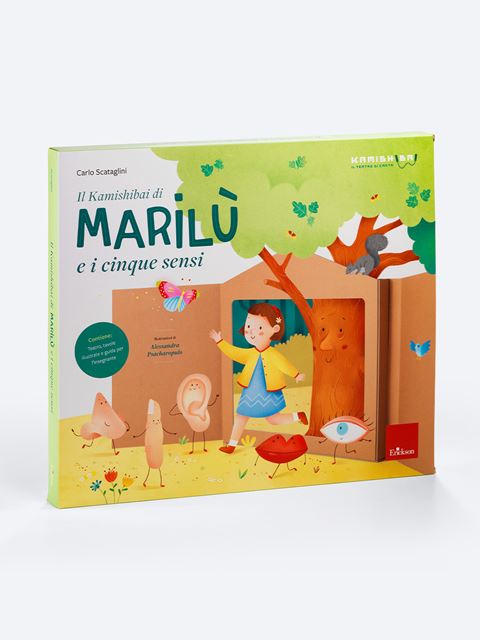
Product: Teaching tools
ISBN: 9788859018322
Publication date: 01/03/2019
Suitable for: Nursery 1st Level (ages 3-4), Nursery 2nd Level (ages 4-5)
REQUEST A SAMPLE OR MORE INFORMATION
Enter the magical wood of Marilù and follow her on a fantastic adventure to discover the five senses. Many funny characters are waiting for you, and so is the great tree of nursery rhymes–the children’s friend who tells everything through rhyme! The art of kamishibai, ancient Japanese street theater, is revised and adapted to provide children with an engaging experience while leaving ample room for the development of a free imagination. For adults, both inside and outside school, it can be a useful starting point for new workshops and educational activities on the five senses.
Kamishibai, the traditional “paper theater” of ancient Japan, is a form of narration that combines the dramatization of the narrator with suggestive images. Children use their imagination while the adult interprets the text printed on the back of the illustrated cards resulting in a performance that involves and frees the imagination. It is an experience that can be considered complete in itself, but it can also be used as an introduction or a complement for educational workshops with children aged 3-6. Erickson’s kamishibai has been specially designed for use in schools, especially in early childhood, and its light structure makes it easy to use and transport.
Box contents:

Narrate and reenact stories using a «paper theatre»
The Kamishibai of Marilù and the five senses is a cardboard puppet theatre – which is inspired by the traditional Japanese Kamishibai (from Japanese: kami: paper; shibai: theatre) – through which it is possible to tell children stories, accompanying reading with suggestive visual images. In this case, the story of "Marilù and the 5 senses" aims to involve the small spectators and make them experience an emotionally significant multi-sensory experience. The kamishibai, in addition to being a container of author's stories and artist illustrations, can also be used independently by children, in the construction and narration of new stories or fables.
Erickson’s kamishibai was created for use in schools, particularly kindergarten, with children ages 3 to 6. In addition to school use, kamishibai can be used at home or in other child centre contexts, like libraries or play centres.
WHAT IT CONTAINS
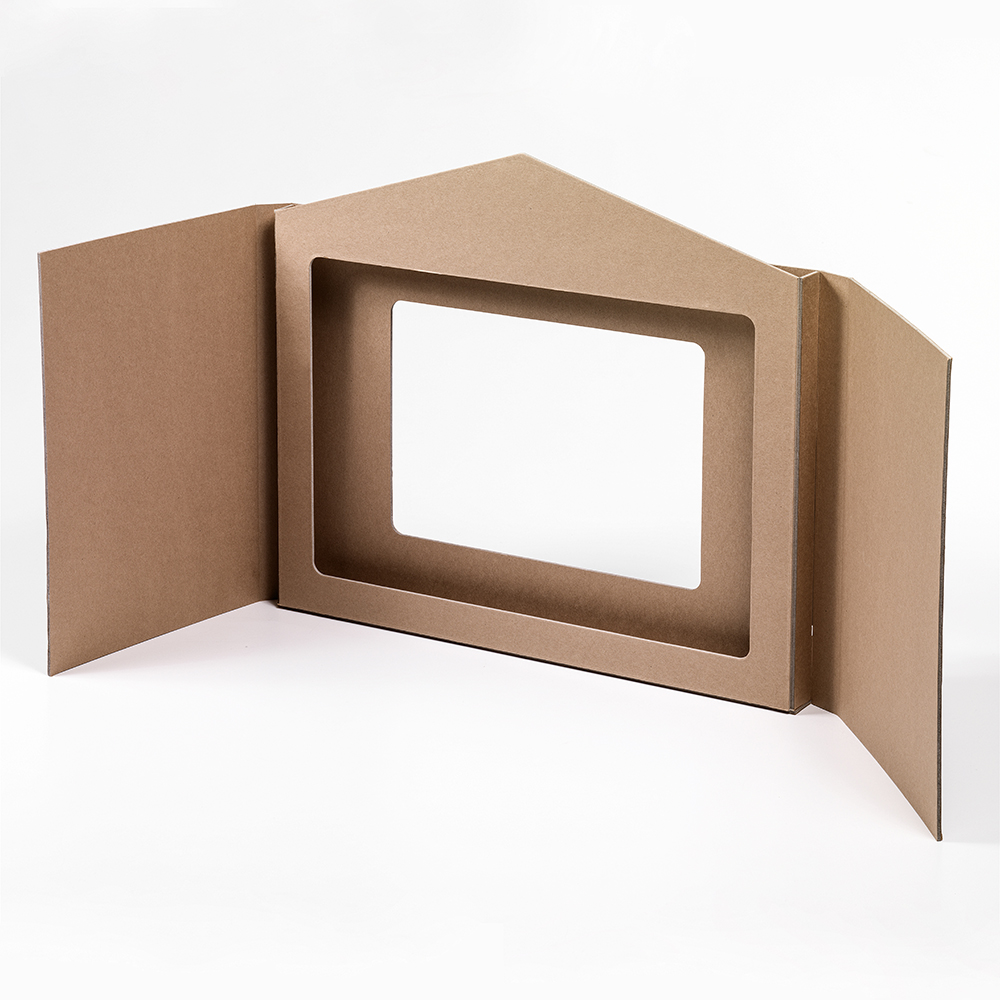
A Foldable cardboard theatre, to decorate as necessary to enrich the story
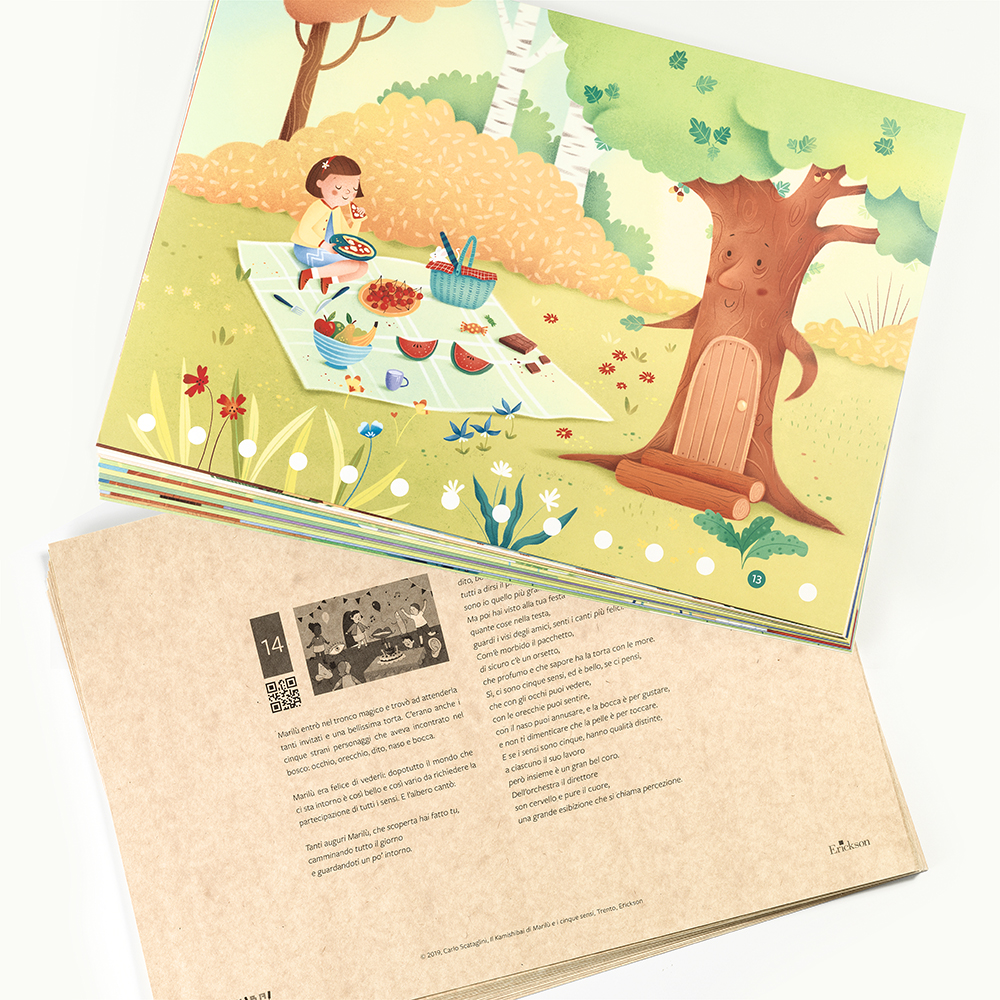
14 Illustrated narrative boards in A3 format, numbered, with pictures on the front and the narrative text on the back 2 Extra boards with neutral backgrounds and characters to cut out for creating new stories
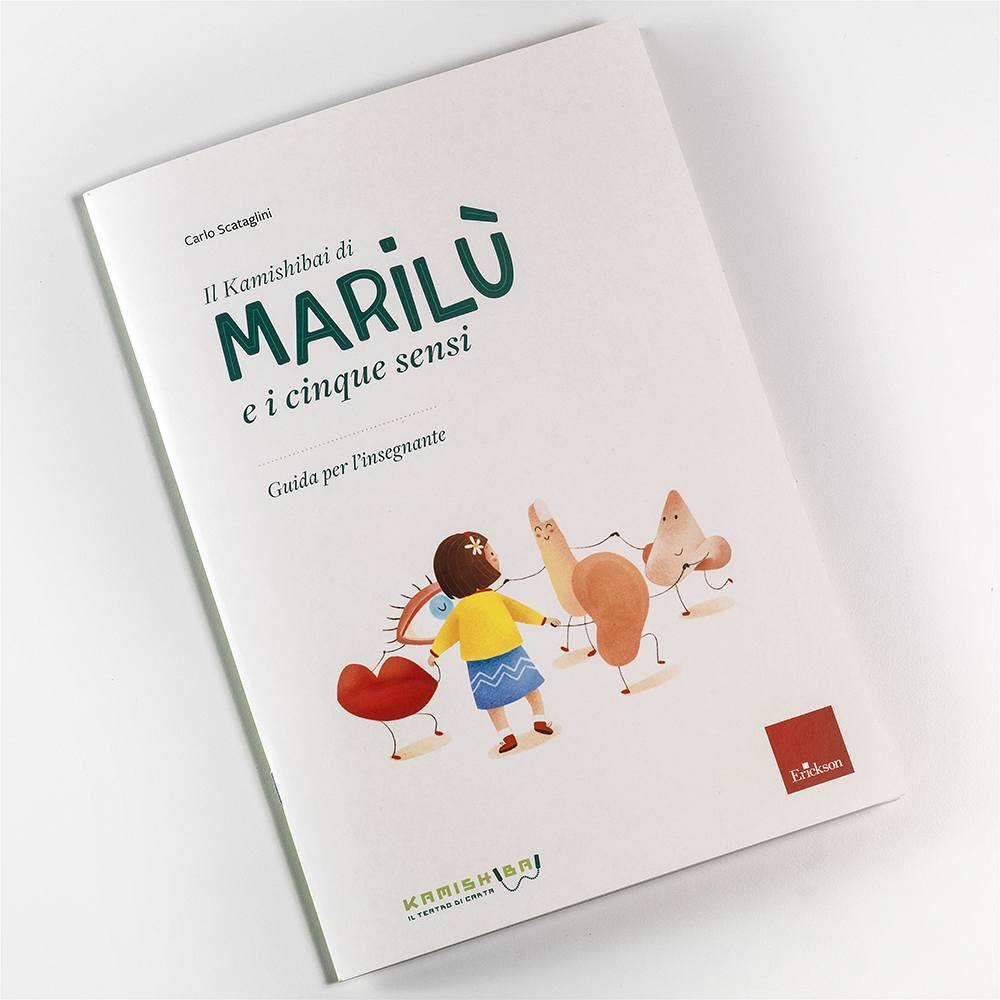
Teacher’s guide with numerous tips and workshops for getting the most out of the kamishibai activities
HOW DOES IT WORK?
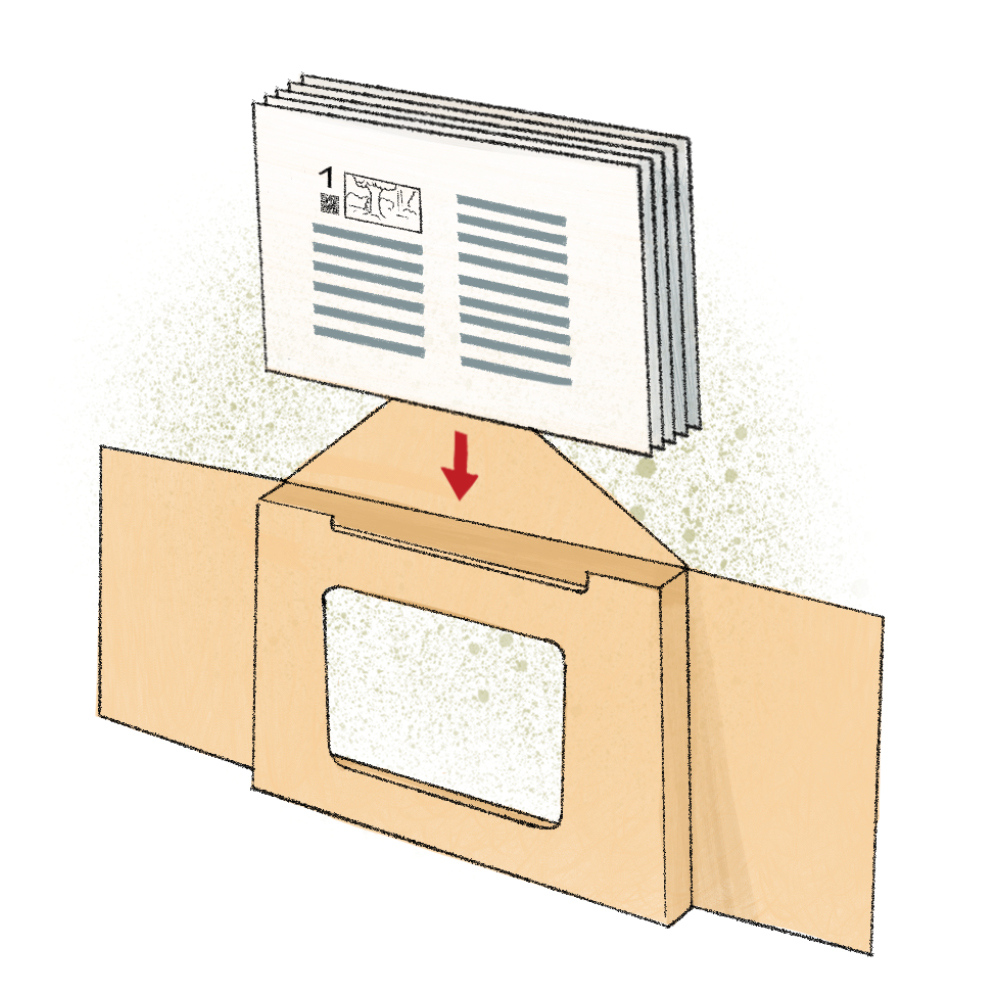
First, the theatre is placed on the table and the boards are inserted in order of appearance, from 1 to 14.

The narration proceeds by scrolling the sheets from front to back, removing the front board and inserting it behind all the others: on the front the illustrations capture the attention of the children, on the back the adult reads the story.
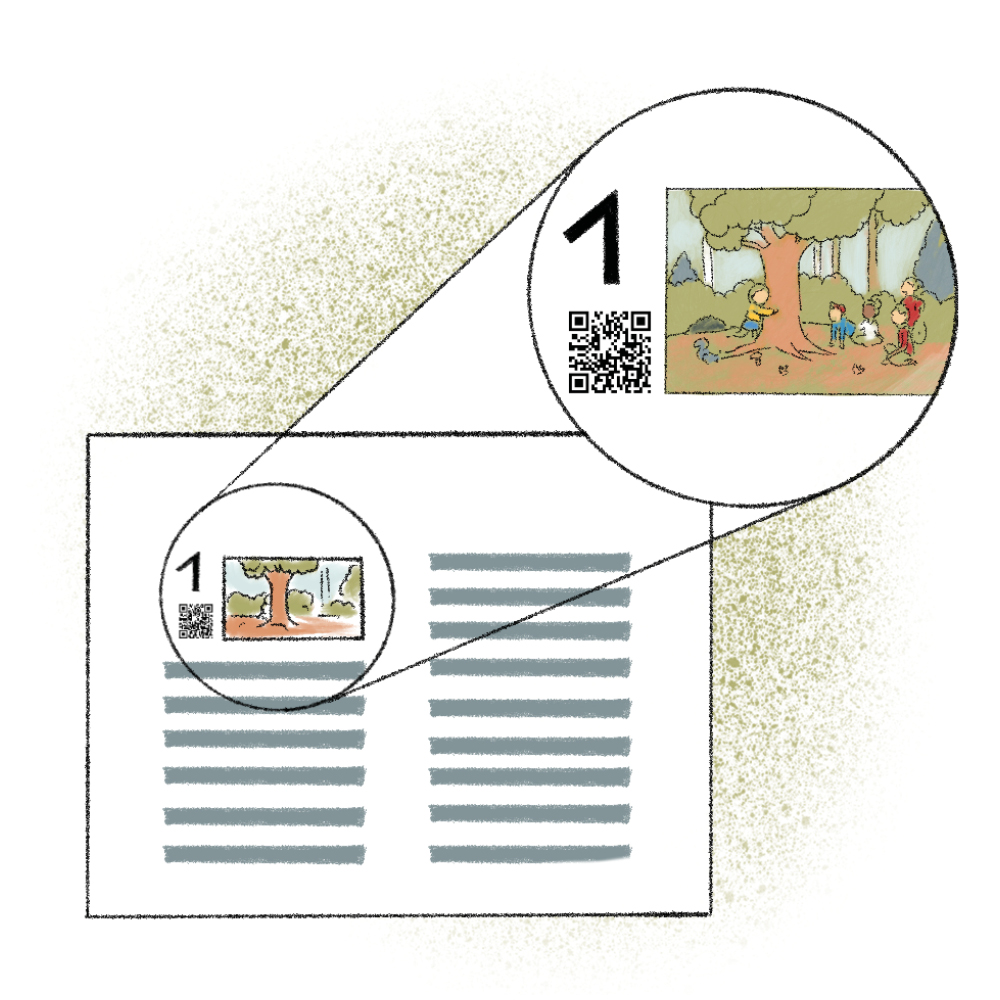
On the back of each board, next to the text, there is a thumbnail of the image that the viewers see and a QR-code for accessing sound effects and music.
NARRATION SUGGESTIONS
Before: It is very important to make the narrative magical and engaging, creating a stimulating atmosphere suitable for children: setting up the lights, taking care of the sound accompaniment, arranging pillows and rugs on the floor, etc.
During: The stories chosen for the kamishibai have a didactic-educational purpose and allow the teacher to link the narration to numerous activities on the five senses (sight, hearing, smell, touch and taste) to expose the children to a multi-sensory experience where they can learn how to know and manage their emotions.
After: It is possible to reflect on the themes, context, and characters encountered during the narration. By inviting children to rework the story of Marilù and recite new narratives, they will give free rein to their imaginations.
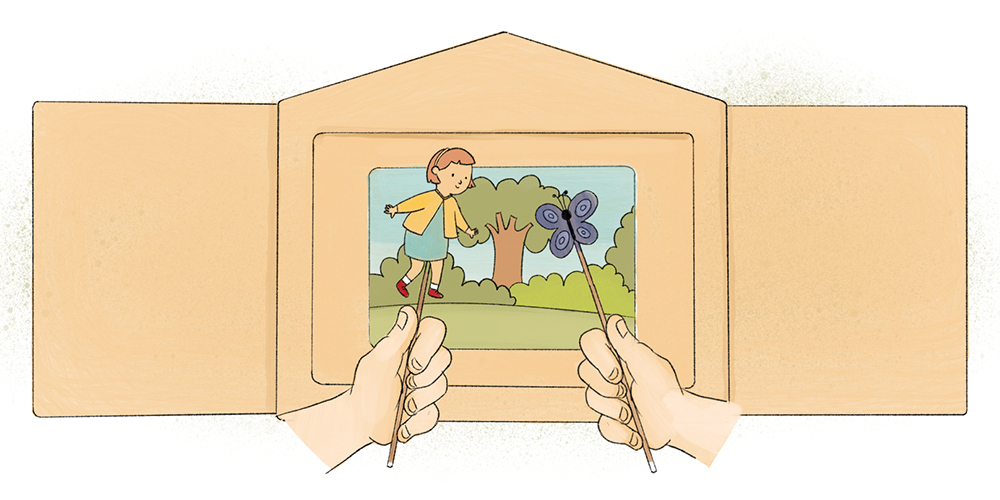
USES FOR KAMISHIBAI
Listening to stories, as well as re-telling them and inventing new ones, is fundamental for children’s cognitive and emotional growth because it allows them to know and understand the world, to become aware of their own inner self and that of others. With Erickson’s kamishibai, there is also a direct connection to didactics, as the contents of the stories are carefully selected based on the didactic objectives of kindergarten and primary school.
Kamishibai is particularly useful for: